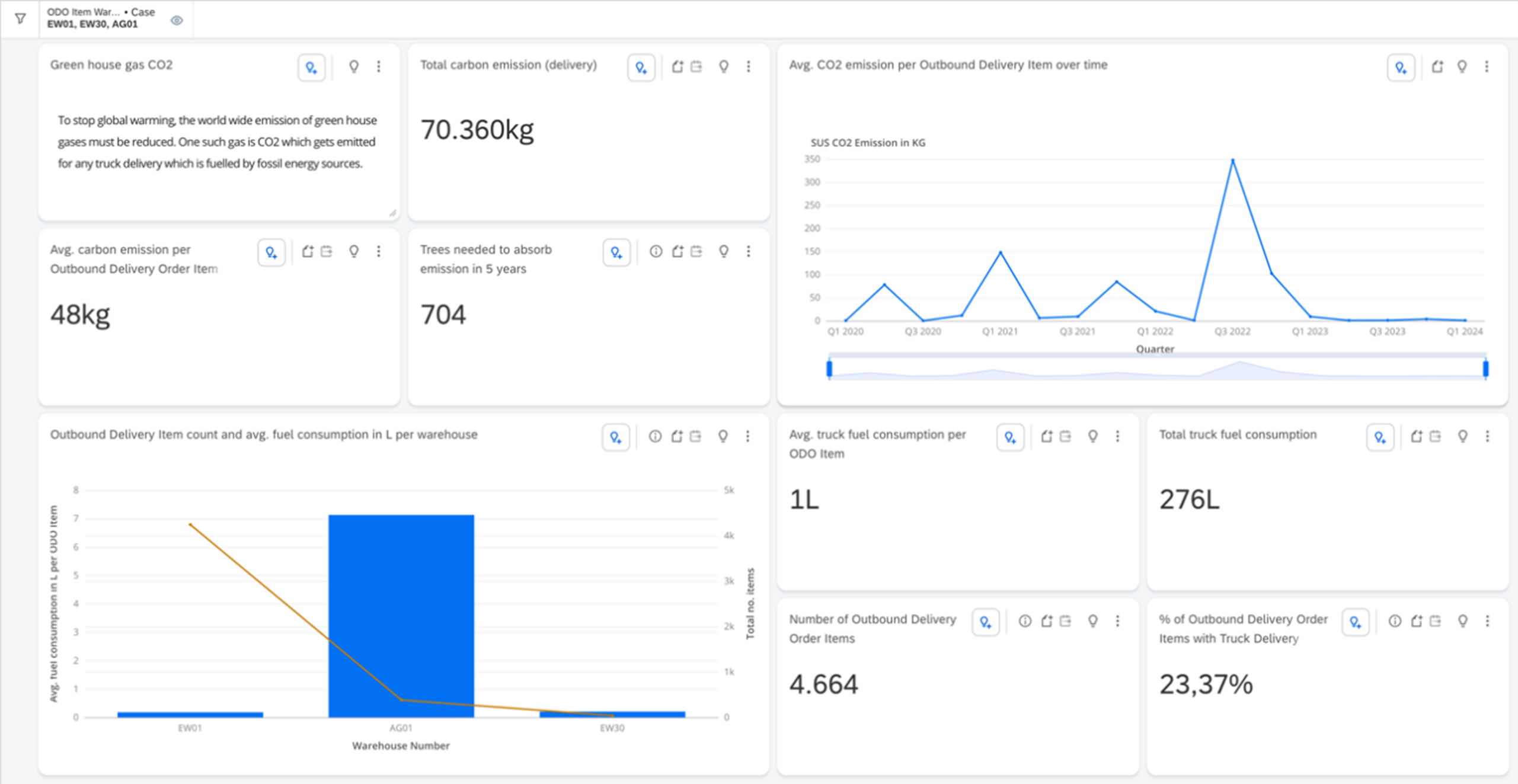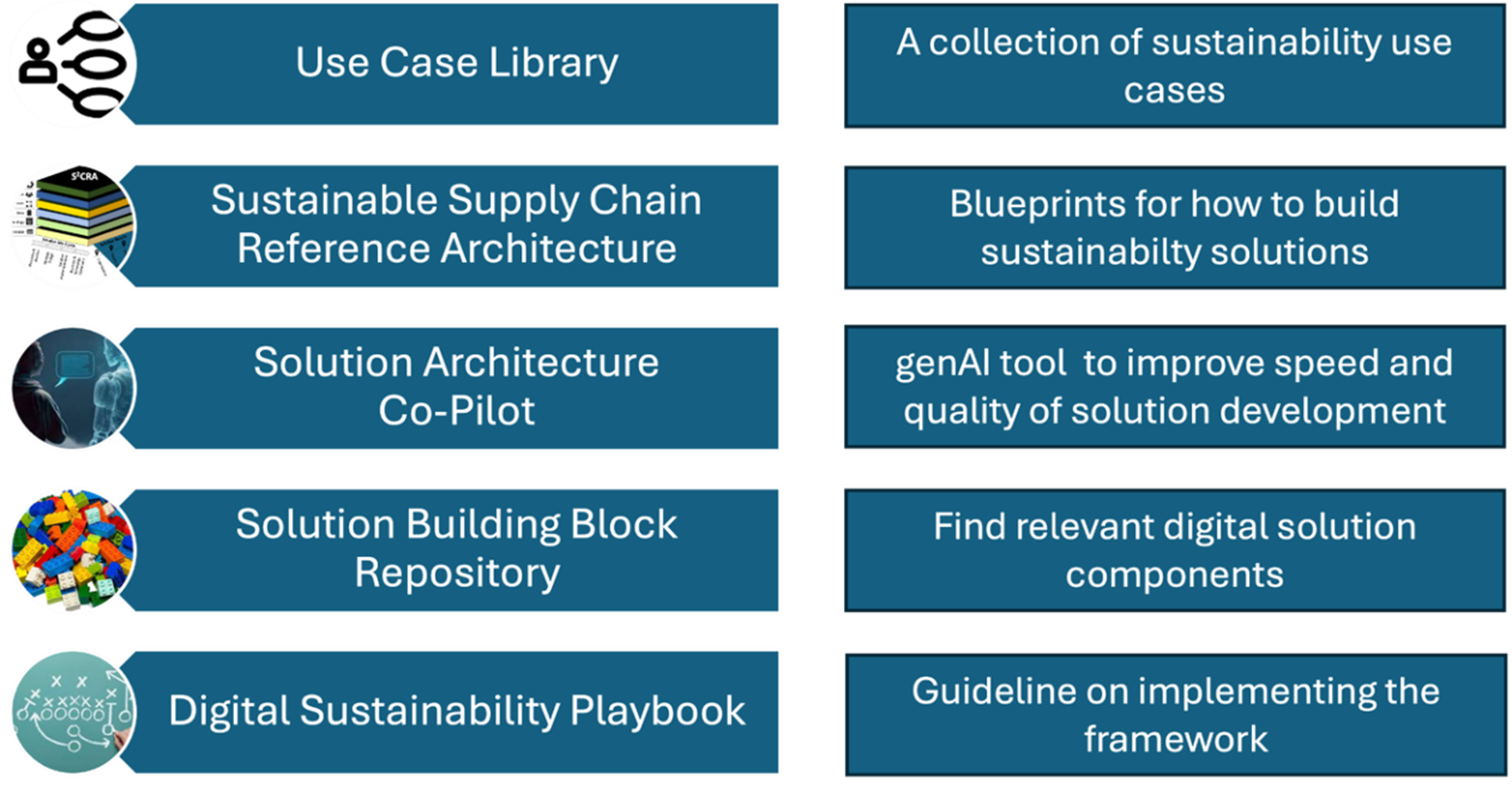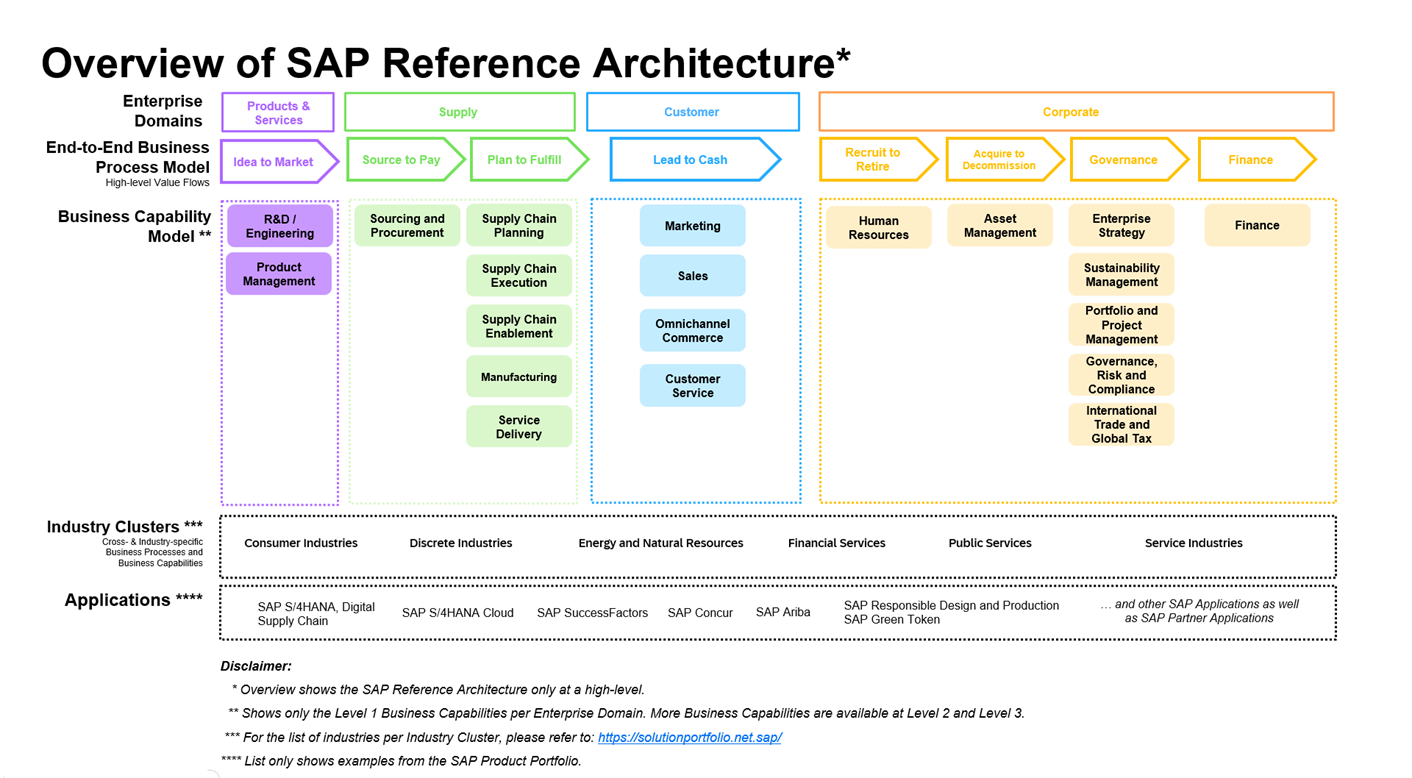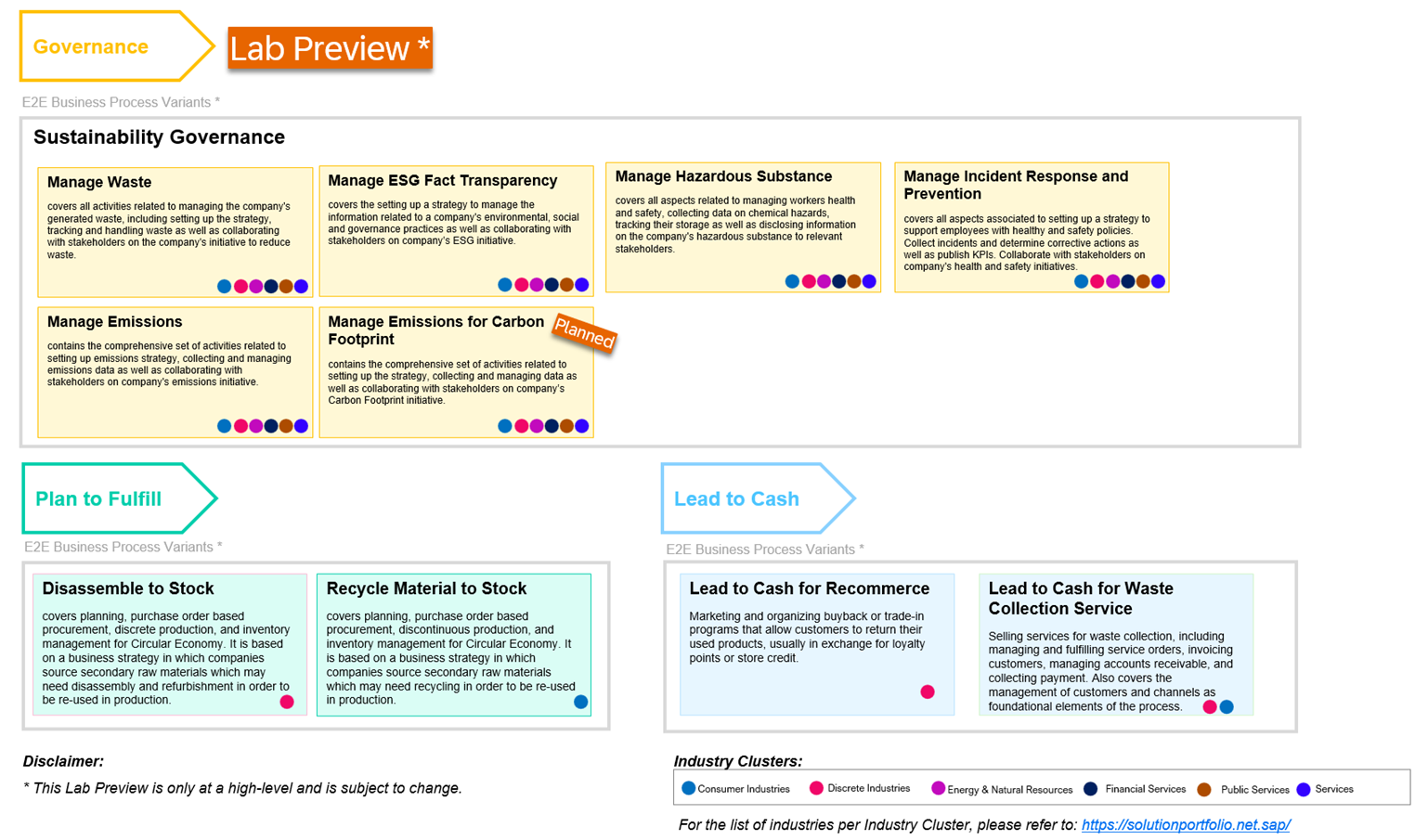In today’s dynamic business landscape, sustainability has transcended platitudes—it stands as a critical priority for global organizations. Driven by regulatory mandates, investor expectations, and consumer demand, companies face mounting pressure to adopt sustainable practices. But how can they achieve this by focusing more on business processes?
Join our experts, Fareed Zandkarimi (SAP Signavio), Maria Goltz (Enterprise Architect, SAP SE), and Peter Klement (Director Sustainability, Massachusetts Institute of Technology (MIT)) in this special Q&A blog post to explore the synergy between process excellence, technology, and innovations that deliver environmental benefits and cost savings.
Transforming business processes today for a sustainable tomorrow
1) At SAP, we see sustainability high on our customers’ agendas. What are the priorities in this regard and which challenges are they looking to solve?
Peter: Organizations are under pressure in the area of sustainability from different directions.
- First is regulatory pressure, especially regarding sustainability reporting, such as the German Supply Chain Act.
- Second, investors are making sustainability performance an additional criterion for company investments;
- Third, consumers are demanding more sustainable products and services;
- Fourth, there are increased expectations from employees - current and future - toward the sustainability focus of their organization,
- And fifth; pressure is coming from society and activist groups.
With that, sustainability not only brings challenges but also opens new opportunities – meaning that a twin transformation (the parallel transformation of an organization from a digital and sustainability perspective) of the organization is necessary, which also requires investment in digital technologies. Here, synergies can be created by using existing and emerging standards, and designing solutions, so that the solution components can be reused for future sustainability use cases.
To implement those reusable digital building blocks, organizations need to consider the following requirements:
- Extended Data Structures: These structures should encompass relevant sustainability information and leverage existing standards.
- Enhanced Analysis Methods: Organizations need advanced tools and methods to derive meaningful insights.
- Connecting Insights to Action: Bridging the gap between insights and process execution is crucial.
- Going Beyond: Most sustainability impacts are in an organization’s supply chain (scope 3); hence, data exchange and sustainability solutions need to be implemented with interoperability in mind.
- Aligned Taxonomies: Real-time intercommunication through the supply chain is crucial and needs alignment in related taxonomies through unified standards.
This means that real success for organizations hinges on the synergy between data insights and process action. Business process management plays a pivotal role in managing process action. Embedding sustainability into operational processes and integrating processes in the value network is something organizations need to address.
Fareed: Exactly! Looking at “digital building blocks” from the perspective of SAP Signavio solutions, companies can effectively leverage SAP Signavio Value Accelerators to align their operations with sustainability goals. These tools facilitate rapid implementation of best practices and provide frameworks for continuous improvement, making sustainability a core component of business strategy.
2) Can new practices such as creating a digital twin of an organization (DTO) help them be more sustainable? In which way?
Peter: Yes! A DTO allows companies to look at sustainability from different perspectives. Besides creating digital twins for assets, they can also be created for products, facilities and processes. An example of a process digital twin would be the sustainability reporting process, where internal and external sustainability data is collected, using, for example, process mining tools. Another example would be a digital twin of a production process, where the process metrics will be expanded to contain sustainability KPIs.
Fareed: Robust process analysis is essential here, enabling companies to implement custom data-driven indicators that reflect their operational performance and sustainability metrics. With that, digital twins can contribute in many ways. For example:
- Resource Optimization: By simulating real-world ecosystems, digital twins help organizations better utilize resources. They allow companies to visualize the entire lifecycle of a product, identifying areas for improvement in longevity and recyclability.
- Emissions Reduction: Digital twins model the impact of environmental factors and human activities. This enables companies to decide on resource usage, emissions reduction, and energy efficiency. By running in tandem with their real-world counterparts, digital twins identify areas for improvement and propose solutions.
- Supply Chain Efficiency: Digital twins help identify efficiencies without physical audits. They optimize supply and transportation networks, reducing waste and driving productivity sustainably.
Transparency and compliance are crucial for a strong sustainability strategy. Tools for documenting and monitoring processes ensure compliance with legal requirements and voluntary standards. Outcome-driven management and regular process reviews help align operations with regulations and sustainability goals, fostering trust and accountability.
3) What are the typical use cases you foresee? Can you share tangible examples?
Peter: As sustainability is relevant to almost all company areas, many use cases exist. Some examples include sustainability reporting, reducing waste in production, designing products that allow for easy repair, reducing energy consumption, switching to renewable energies, and identifying forced labor through social media.
Technical innovation also plays a significant role. For example, think of a startup that produces green fertilizer developing a method to use green hydrogen and renewable energy sources in its production process. By replacing fossil fuels, it is able to produce carbon-free fertilizer. This process innovation is supported by a holistic digital twin approach on the level of the individual assets, production processes, factory and global factory network.
Fareed: Process mining KPIs can play a pivotal role in advancing sustainability by enabling organizations to measure and improve process performance. For instance, in a procurement process, using process mining we analyze efficiency by extracting cycle times for key stages such as ordering, purchase confirmation, and invoice clearance (see Figure 1). Monitoring these lead times helps identify delays or bottlenecks, reducing wasted time and resources.
Additionally, process mining supports measuring effectiveness by identifying deviations from the to-be process, allowing organizations to pinpoint and address inefficiencies that lead to material or workforce waste. By offering precise, data-driven insights into process efficiency and effectiveness, process mining helps minimize resource wastage and optimizes operations, driving sustainable outcomes.
4) How can SAP Signavio solutions, methodologies and content strategy support the green cause?
Fareed: Sustainable practices involve using resources efficiently. With SAP Signavio solutions, companies can analyze their business processes to find areas for improvement. By visualizing and modeling these processes, inefficiencies become clear and can be addressed promptly. This saves costs and reduces resource consumption, minimizing the company's environmental impact.

For comprehensive sustainability insights, it is essential to understand and measure the relevant sustainability aspects embedded within a company's digital footprints . This process involves three critical steps:
- Data Discovery: Identifying relevant data points within enterprise systems, such as ordering and sourcing locations. These data points hold sustainability-related information, either directly (such as, fuel consumption) or indirectly (such as, transport from location A to B).
- Data Enrichment: Augmenting these data points with external knowledge, such as calculating CO2 emissions from transportation between the sourcing and ordering locations. In this step, we present the potential sustainability information from the data points. We often use external APIs and public data sources to enrich the findings.
- Data Representation: Displaying the enriched data through intuitive dashboard components, helping ensure effective communication of sustainability metrics.
- Process Behavior Analysis: SAP Signavio solutions can report on the process behavior (the process control-flow) that illustrates inefficient and ineffective process aspects. For example, calculating rework, waste, process deviations, performance deviations, and non-compliant activities within operational processes. Process mining can then effectively measure process performance, a critical aspect of sustainability (Figure 2).
And although these sustainability measures can be approximative, they offer significant benefits in several ways:
- First, companies gain a realistic understanding of their sustainability performance, which may have been previously unknown.
- Second, by tracking performance over time, businesses can monitor trends and developments, identifying positive or negative changes.
- Third, after implementing new sustainability policies, companies can observe shifts in their indicators, thereby better understanding the impact of their decisions (as long as the calculation methods stay consistent).
Diving deeper, implementing and monitoring sustainability strategies involves more than just setting goals. With SAP Signavio solutions, companies can turn strategic sustainability objectives into practical, measurable processes. Dashboards and advanced reporting tools provide immediate insights into sustainability progress, allowing teams to make timely adjustments and ensure effective implementation.
Additionally, SAP Signavio promotes a sustainable corporate culture by emphasizing transparency and collaboration. Employees can access critical information and actively participate in process improvements, fostering a company-wide commitment to sustainability. This boosts morale and aligns the entire organization with a shared vision of responsible practices.
Putting this in context, SAP Signavio solutions can equip businesses with the necessary tools to achieve their ecological and social responsibilities. Whether optimizing processes or helping enurse compliance, the solutions drive sustainability and secure a greener future for the company.

5) What's next? What are the future scenarios and impacts of AI?
Peter: AI, as an integral part of digital twins, provides intelligence on top of data to find opportunities to optimize operations and decision-making regarding future investments. It also helps spot current issues within the company. Plus, its prediction capabilities can prevent problems from happening in the first place.
The interactions of the digital twins within an organization with the global supply chain is something to consider as well, because sustainability impacts are often created outside the organization, for example, the embedded carbon footprint of machines and material used for production.
Emerging generative AI solutions can also help build sustainability solutions faster and of better quality. Digital solutions are getting more complex, and it can be hard for a person to design and understand an end-to-end solution for a specific use case.
Let’s imagine sustainability reporting, where internal data comes from digital twins and external data comes through data spaces, like Catena-X. A two-digit number of applications and systems from different IT and OT vendors provides the data needed for a comprehensive sustainability report. Architecting and designing such an end-to-end solution requires not only a world-class modeling tool, but also a co-pilot – being an application that uses AI technology, including LLMs (Large Language Models) to support people with their tasks, for example, solution architects.
While co-pilots are used today in development and code generation, the first initiatives have started to bring them into the early phases (requirements and design) of creating digital solutions.
Fareed: SAP Signavio solutions’ Process AI capabilities can significantly benefit business sustainability by enhancing process management and decision-making. The solutions leverage SAP’s deep industry knowledge and process understanding to address real-world business challenges.
By aligning the principles of relevance, reliability, and responsibility – generative AI is a valuable tool for sustainable business transformation. For example:
- process design: Process owners and modelers can leverage generative AI to design new processes more efficiently. Generative AI provides guided recommendations for process models by analyzing large data sets and best practices. This accelerates the process design phase, allowing organizations to adapt to changing requirements faster.
- process implementation: Generative AI helps simulate different scenarios virtually before they are implemented, so process owners can identify bottlenecks, delays, and delivery issues in advance. Additionally, generative AI assists in creating operating procedures, manuals, reports, and training materials with minimal human intervention.
- process monitoring and excellence: Process owners often wonder which metrics to monitor during process execution. Generative AI suggests relevant KPIs for each phase of the process. By tracking these KPIs, organizations can ensure sustainable and efficient operations.
6) How can organizations create a holistic approach to ensure their sustainability transformation?
Peter: Plattform Industrie 4.0 approached the MIT Club of Germany to write a whitepaper on sustainable supply chains and data spaces. This collaboration was intended to look at how digital technologies can transform global supply chains from a sustainability perspective.
The MIT Club assembled a global team within its value network, including its industry and academic partners, to explore this space.
It became clear that Industry 4.0 initiatives like Catena-X already build standards to help achieve this goal, but are focused on data exchange, which is necessary but insufficient to achieve the twin transformation. The team started to build on the existing Industry 4.0 concepts, standards, and approaches to create a holistic framework that intends to accelerate the development of sustainability solutions while simultaneously improving the quality of those solutions. The result was the so-called Sustainable Supply Chain Framework, shown in figure 3.

The Sustainable Supply Chain Framework consists of five components:
- The Use Case Library is a collection of business use cases describing the problem or opportunity for which an organization wants to build a digital solution.
- The Sustainable Supply Chain Reference Architecture contains reference models or blueprints for the solutions implementing the use cases.
- The Solution Architecture Co-Pilot is a Generative AI tool that helps the solution architecture develop faster and of better quality based on use case description and reference models. It also generates code, configurations, and models in the development environment of the digital systems that are needed for the solution.
- The Solution Building Block Repository contains information about the software and hardware products that can be used to implement the solutions.
- The Digital Sustainability Playbook describes how to tailor and use the framework for a specific organization.
From the perspective of an individual organization, it is key not to build a “sustainability silo” but to integrate the sustainability perspective into the existing enterprise architecture (EA). Often EA is limited to IT enterprise architecture, ignoring aspects like automation and operational technology, business process, and strategy. Here the Sustainable Supply Chain Framework adds a more holistic perspective to many IT-centric EA approaches.
(The Sustainable Supply Chain Framework was presented for the first time at the Hawaii International Conference on System Sciences, HICSS-56 conference and afterwards at the Hannover Fair on the Industry 4.0 Stage.)
Maria: To make sustainability an integral part of a company's strategy, enterprise architecture plays a crucial role. EA provides a mental model of how different parts of the company connect and interact, ensuring a holistic approach to sustainability.
Companies can leverage SAP reference architecture (see Figure 4), which provides a pre-built reference business process model at the value flow level as well as a reference business capability model. Moreover, it offers recommended solutions from the SAP product portfolio as well as SAP partner solutions to support reference business processes and capabilities.

SAP reference architecture offers content around different sustainability topics such as emissions and waste management. The content is continually evolving, and new updates are being released (see Figure 5).

Currently, the content is available for exploration using the SAP Signavio Process Explorer solution. Recently, SAP LeanIX published the business capabilities in its LeanIX reference catalogs.
7) What's next for joint MIT and SAP Signavio sustainability activities?
The MIT Club of Germany and SAP are currently exploring synergies and aligning their sustainability activities, with this blog being the first outcome. Further blog posts will go deeper into some of the concepts mentioned. Stay tuned!
To recap, find more information at the following links:

